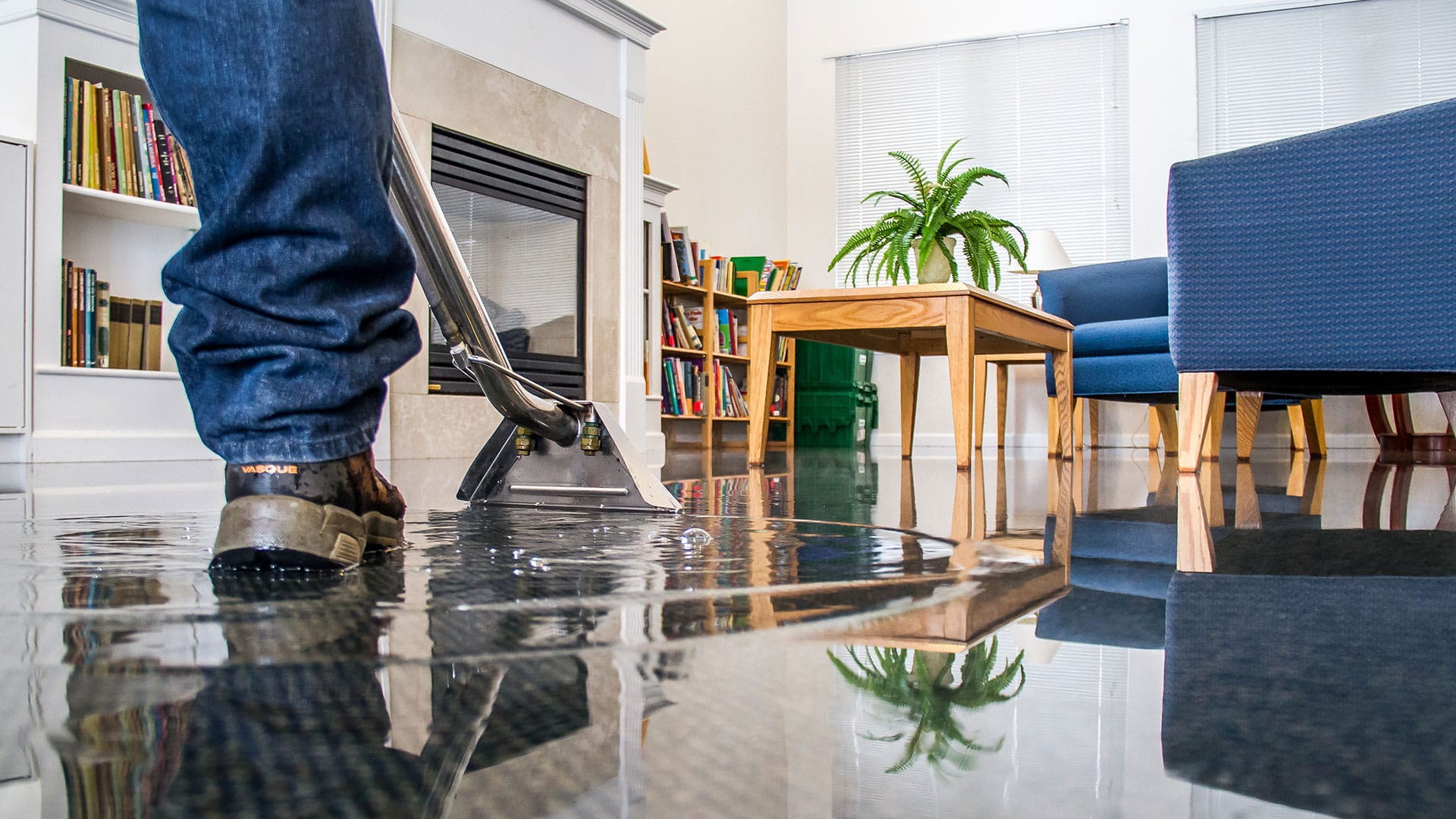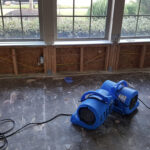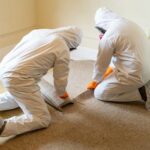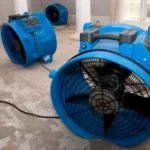
22 Aug Flood Repair: Essential Steps to Take After a Flood
Flood repair can be a daunting task, but understanding the essential steps to take after a flood can help you navigate the process with greater confidence. Whether you’re dealing with minor water damage or a significant flood repair, this comprehensive guide will provide you with the knowledge needed to restore your property efficiently and safely.
Table of Contents
1. Understanding the Impact of a Flood
– Types of Flood Damage
– Long-Term Consequences
2. Immediate Actions to Take After a Flood
– Ensure Safety First
– Document the Damage
– Contact Your Insurance Company
3. Water Removal and Drying Out Your Home
– Emergency Water Removal
– Using Dehumidifiers and Fans
– Proper Ventilation Techniques
4. Assessing and Repairing Flood Damage
– Evaluating Structural Damage
– Repairing Walls, Floors, and Foundations
– When to Hire Professionals
Understanding the Impact of a Flood
Flood repair is often necessary after a flood causes extensive damage to homes and properties.
Floods can affect everything from the structure to your personal belongings. The aftermath of a flood can be overwhelming, but understanding the impact is the first step in planning an effective repair strategy.
Types of Flood Damage
Flood repair involves addressing various types of damage that can occur during and after a flood. Flood damage can manifest in several ways, each with its own set of challenges:
Structural Damage:
Floodwaters can weaken your home’s foundation, causing cracks in walls, floors, and structural beams. Over time, this can lead to serious safety hazards if not addressed promptly.
Electrical Damage:
Water and electricity are a dangerous combination. Floodwaters can short-circuit your home’s electrical systems, posing a fire risk and rendering your appliances unsafe to use.
Mold and Mildew:
Mold can begin growing within 24-48 hours of water exposure. It spreads quickly and can cause significant damage to walls, floors, and ceilings, as well as pose serious health risks.
Contamination:
Floodwaters often contain harmful bacteria, chemicals, and debris. This contamination can affect everything the water touches, requiring thorough cleaning and sometimes the disposal of affected items.
Personal Property Damage:
Floods can destroy furniture, electronics, clothing, and other personal items. The loss of irreplaceable belongings can be one of the most devastating aspects of a flood.
Long-Term Consequences
The effects of a flood don’t end when the water recedes. Long-term consequences can include:
Structural Integrity Issues:
Unaddressed structural damage can lead to ongoing safety hazards and costly repairs down the line.
Health Risks from Mold:
Mold growth can cause respiratory problems, allergic reactions, and other health issues, particularly for those with pre-existing conditions.
Financial Strain:
Even with insurance, the costs of repairing flood damage can be significant. Lost personal items, repair expenses, and potential home devaluation can add up quickly.
Psychological Impact:
Experiencing a flood can be traumatic, leading to stress, anxiety, and a prolonged sense of loss. It’s important to address both the physical and emotional aspects of recovery.
Flood repair involves addressing various types of damage that can occur during and after a flood. For more information on the different impacts of floods, you can refer to the FEMA Guide to Floods
Immediate Actions to Take After a Flood
When dealing with flood damage, time is of the essence. Taking the right immediate actions can significantly reduce the overall damage and make the recovery process smoother.
Ensure Safety First
Safety should be your top priority after a flood. Follow these steps to ensure your home is safe to enter:
Turn Off Electricity and Gas:
If you can safely access your electrical panel, shut off the electricity to prevent electrocution risks. If you suspect a gas leak, turn off the gas supply and contact the utility company immediately.
Avoid Contaminated Water:
Floodwaters can carry hazardous materials. Avoid direct contact with the water, and wear protective clothing if you must enter the flooded area.
Check for Structural Damage:
Before entering, look for visible signs of structural damage, such as sagging ceilings or walls. If the structure appears unstable, do not enter until it has been inspected by a professional.
Safety should be your top priority after a flood. To learn more about flood safety, you can visit the Red Cross Flood Safety
Document the Damage
Thorough documentation is essential for insurance claims and future repairs. Here’s how to do it effectively:
Take Photos and Videos:
Capture the extent of the damage from multiple angles. Include water levels, damaged items, and any structural issues.
Make a List of Damaged Items:
Create a detailed inventory of damaged personal belongings, including their approximate value. This will help when filing your insurance claim.
Keep All Receipts:
Save receipts for any emergency repairs, cleanup services, or temporary housing costs. These may be reimbursable through your insurance.
Contact Your Insurance Company
Once you’ve documented the damage, contact your insurance company to start the claims process:
Report the Flood Damage:
Provide your insurance company with the documentation you’ve collected and follow their instructions for filing a claim.
Schedule an Adjuster Visit:
Your insurance company will likely send an adjuster to assess the damage in person. Be sure to accompany them during the inspection to point out all areas of concern.
Water Removal and Drying Out Your Home
Removing water quickly and thoroughly is critical to preventing further damage and mold growth.
Emergency Water Removal
Start by removing standing water from your home:
Use Submersible Pumps:
If the water level is deep, use submersible pumps to remove large volumes of water quickly. Wet/dry vacuums can be used for smaller areas.
Consider Professional Help:
For significant flooding, it might be best to hire a professional water damage restoration service. They have the equipment and expertise to remove water safely and efficiently.
Using Dehumidifiers and Fans
After removing standing water, focus on drying out your home:
Deploy Dehumidifiers:
Place dehumidifiers in each affected room to draw moisture out of the air and surfaces. This step is crucial to prevent mold growth.
Set Up Fans:
Use high-powered fans to increase air circulation and speed up the drying process. Aim the fans at wet walls, floors, and other surfaces.
Proper Ventilation Techniques
Ensuring proper ventilation can help avoid further complications:
Open Windows and Doors:
If the weather permits, open windows, and doors to allow fresh air to circulate through your home. This can help with the drying process.
Remove Wet Materials:
Carpets, rugs, and furniture that are soaked should be removed and dried separately. If they can’t be dried thoroughly, they may need to be discarded.
Assessing and Repairing Flood Damage
The flood repair process begins with assessing the damage and planning the necessary repairs.
Evaluating Structural Damage
Carefully inspect your home for structural damage:
Check for Cracks and Shifts:
Look for new cracks in walls, floors, and the foundation. These could indicate that the flood has compromised your home’s structural integrity.
Inspect Doors and Windows:
Ensure that doors and windows open and close properly. Warping from water damage can cause misalignment.
Hire a Structural Engineer:
If you notice significant damage, consult with a structural engineer to assess the extent of the damage and recommend necessary repairs.
Repairing Walls, Floors, and Foundations
Flood repair often involves restoring key structural elements:
Replace Drywall and Insulation:
Water-damaged drywall and insulation should be removed and replaced. Use mold-resistant materials where possible.
Repair Flooring:
Depending on the extent of the damage, you may need to replace flooring materials like carpet, hardwood, or tile. Ensure the subfloor is dry and free of mold before installation.
Foundation Repairs:
If the foundation is damaged, repairs can be complex and costly. Work with professionals who specialize in flood damage to ensure the work is done correctly.
When to Hire Professionals
Knowing when to call in the experts is crucial:
Significant Structural Damage:
For major repairs, such as foundation issues or large-scale mold remediation, professional help is necessary.
Electrical and Plumbing Repairs:
Always hire licensed professionals for electrical and plumbing repairs to ensure safety and compliance with local codes.
Mold Remediation:
If mold is extensive or has spread into difficult-to-access areas, professional remediation services will be needed to remove it safely and effectively.
Preventing Mold Growth After a Flood
Mold can start growing within days of a flood, so it’s crucial to take steps to prevent it.
Mold Prevention Tips
Here’s how to prevent mold from taking hold in your home:
Keep Humidity Levels Low:
Use dehumidifiers and air conditioners to maintain low humidity levels (ideally below 60%) throughout your home.
Ventilate Moist Areas:
Ensure that bathrooms, kitchens, and laundry areas are well-ventilated to prevent moisture buildup.
Clean and Disinfect Surfaces:
Clean and disinfect all surfaces exposed to floodwaters. Use a mixture of water and bleach (1 cup of bleach to 1 gallon of water) to kill mold spores.
Mold Remediation Steps
If mold has already started to grow, take these steps:
Isolate the Affected Area:
Close off the area to prevent mold spores from spreading to other parts of your home.
Remove and Dispose of Mold-Infested Materials:
Remove porous materials like drywall, insulation, and carpet if they’ve been infested with mold. Seal them in plastic bags before disposal.
Clean Non-Porous Surfaces:
Hard surfaces like metal, glass, and plastic can be cleaned and disinfected. Scrub them with a mold-killing solution and dry them thoroughly.
Mold remediation is crucial after a flood to prevent health risks. For a detailed guide on mold remediation, consult the EPA’s Mold Remediation Guide
When to Call a Professional
In some cases, professional mold remediation is necessary:
Widespread Mold Growth:
If mold has spread extensively or is growing in hard-to-reach areas, professional help is essential to remove it completely.
Health Concerns:
If anyone in your household has health conditions that could be exacerbated by mold, it’s safer to hire professionals to handle the cleanup.
Final Steps in Flood Recovery
After the immediate dangers are dealt with, focus on restoring your home and preparing for the future.
Restoring Your Home’s Interior
Once repairs are complete, you can start restoring your home:
Choose Flood-Resistant Materials:
When replacing flooring, walls, or insulation, opt for materials that are more resistant to water damage. This can help minimize future repairs if another flood occurs.
Repaint and Refinish:
Use mold-resistant paints and finishes in areas that were affected by the flood. This can provide an extra layer of protection against future moisture issues.
Restore Personal Belongings:
Clean and restore salvaged personal items. If possible, use professional cleaning services for delicate or valuable items.
Updating Insurance and Documentation
After a flood, it’s important to review and update your insurance and personal records:
Review Your Insurance Policy:
Ensure that your insurance coverage is adequate to cover potential future flood damage. Consider adding or increasing flood insurance if you live in a high-risk area.
Document Repairs and Upgrades:
Keep a detailed record of all repairs, upgrades, and expenses related to the flood. This information can be useful for insurance purposes and for selling your home in the future.
Conclusion
Recovering from a flood is a challenging and often overwhelming process, but with the right steps, you can restore your home and protect it from future damage. By understanding the impact of a flood, taking immediate action, and following best practices for repair and mold prevention, you can rebuild stronger and more resilient than before. Remember, the key to successful flood recovery is thorough planning, professional help when needed, and ongoing vigilance to keep your home safe and secure.




